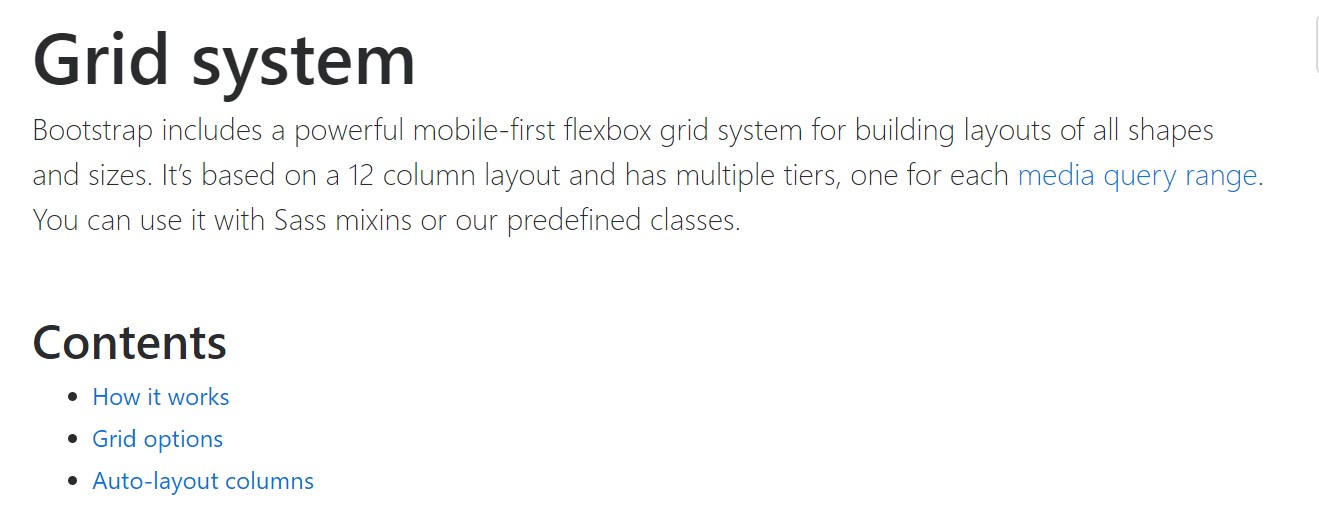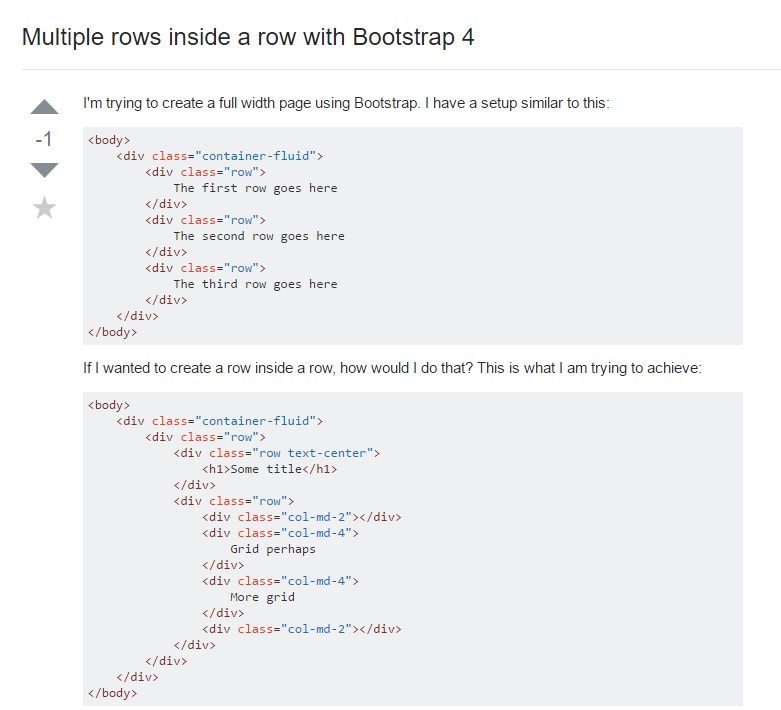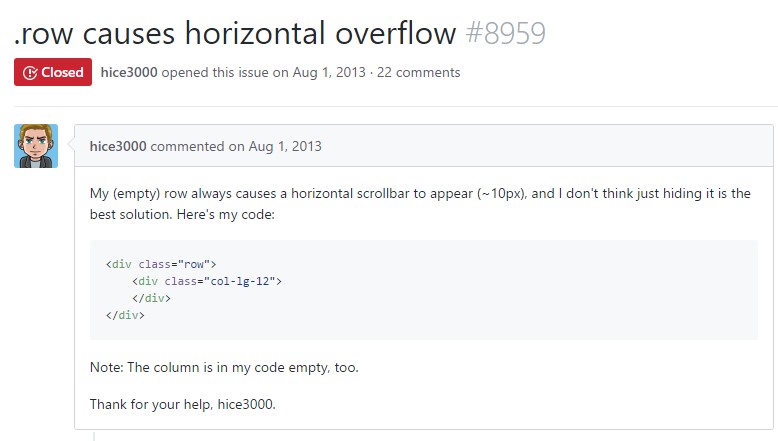Bootstrap Row Class
Introduction
Exactly what do responsive frameworks execute-- they deliver us with a convenient and functioning grid environment to put out the web content, making certain if we determine it right and so it will work and showcase properly on any gadget no matter the sizes of its screen. And like in the construction each and every framework involving some of the most prominent one in its most current version-- the Bootstrap 4 framework-- feature just a couple of main features that laid down and mixed properly can help you design almost any appealing appearance to fit your design and visual sense.
In Bootstrap, generally, the grid arrangement becomes assembled by three basic features that you have very likely already found around examining the code of several web pages-- these are actually the
.container.container-fluid.row.col-In the case that you're pretty new to this entire thing and occasionally can think about which was the appropriate manner these three has to be set inside your markup here is really a plain technique-- everything you ought to remember is CRC-- this abbreviation comes for Container-- Row-- Column. And because you'll briefly adjust watching the columns just as the inner feature it's not change possible you would misstep what the first and the last C indicates. ( more helpful hints)
Number of words regarding the grid system in Bootstrap 4:
Bootstrap's grid mode works with a series of containers, columns, and rows to layout and also fix content. It's set up through flexbox and is perfectly responsive. Below is an illustration and an in-depth look at exactly how the grid integrates.
The above scenario designs three equal-width columns on small-sized, standard, large, and extra sizable gadgets employing our predefined grid classes. Those columns are focused in the webpage along with the parent
.containerHere is actually a way it performs:
- Containers deliver a method to focus your internet site's components. Use
.container.container-fluid- Rows are horizontal bunches of columns which make certain your columns are really lined up effectively. We utilize the negative margin method for
.row- Web content needs to be set within columns, and simply just columns can be immediate children of Bootstrap Row Class.
- Due to flexbox, grid columns without a specified width will promptly format with equal widths. For example, four instances of
.col-sm- Column classes indicate the amount of columns you 'd like to use from the possible 12 per row. { So, on the occasion that you need three equal-width columns, you can use
.col-sm-4- Column
widths- Columns come with horizontal
paddingmarginpadding.no-gutters.row- There are 5 grid tiers, one for each responsive breakpoint: all breakpoints (extra little), small-sized, standard, huge, and extra large.
- Grid tiers are formed on minimum widths, meaning they concern that tier and all those above it (e.g.,
.col-sm-4- You can employ predefined grid classes or Sass mixins for more semantic markup.
Understand the limits plus problems about flexbox, such as the incapability to employ some HTML elements such as flex containers.
Whilst the Containers give us fixed in max size or spreading from edge to edge horizontal area on screen with slight useful paddings around and the columns grant the means to delivering the display area horizontally-- once again with several paddings around the certain material providing it a territory to breathe we are simply going to target our focus to the Bootstrap Row feature and all of the good techniques we can surely use it for styling, fixing and distributing its components employing the bright brand-new to alpha 6 flexbox utilities which are really several classes to add to the
.row-sm--md-The best way to put into action the Bootstrap Row Table:
Flexbox utilities can be used for putting together the order of the elements positioned in a
.row.flex-row.flex-row-reverse.flex-column.flex-column-reverseHere is precisely how the grid tiers infixes get utilized-- for example to stack the
.row.flex-lg-column.flex-Together with the flexbox utilities useded on a
.row.justify-content-start.justify-content-end.justify-content-center.justify-content between.justify-content-aroundThis counts likewise to the upright location which in Bootstrap 4 flexbox utilities has been simply managed just as
.align-.align-items-start.row.align-items-end.align-items-centerA different selections are lining up the things by their base lines being adjusted the class is
.align-items-baseline.align-items-stretchAll the flexbox utilities mentioned so far uphold separate grid tiers infixes-- insert them right before the last word of the equivalent classes-- just like
.align-items-sm-stretch.justify-content-md-betweenFinal thoughts
Here is simply precisely how this important but at very first look not so customizable element-- the
.rowInspect a couple of video clip tutorials regarding Bootstrap Row:
Connected topics:
Bootstrap 4 Grid system: main information

Multiple rows inside a row with Bootstrap 4

Yet another difficulty: .row
causes horizontal overflow
.row
